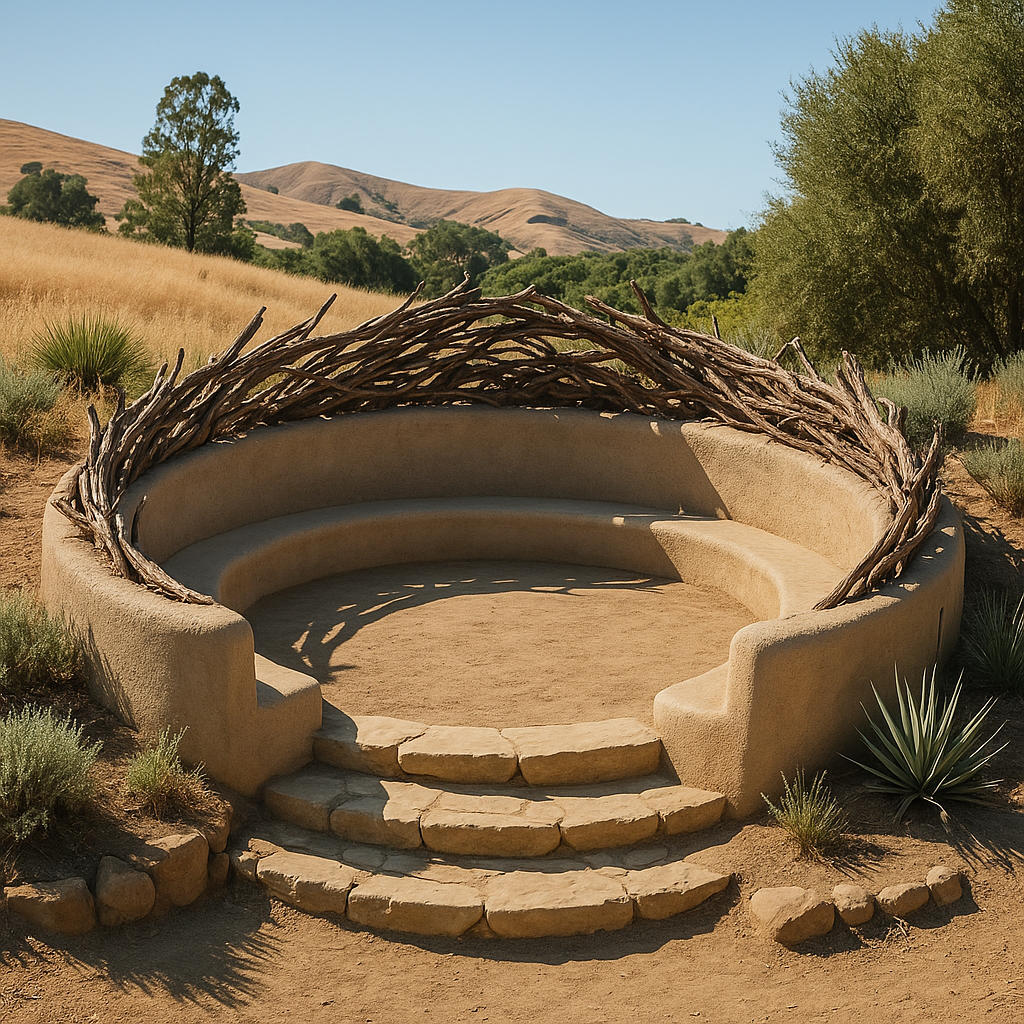Skye Ruozzi
Architect weaving ecology, craft, and code into regenerative spaces.
Terra Corpus
Terra Corpus is a site-specific sculptural gathering space designed as a vessel for resonance, healing, and communal experience, centering the feminine aspect of creation. Located on a regenerative farm in a high fire-hazard area, the work acknowledges cycles of depletion and renewal in both the land and its communities. The farm is stewarded by first-generation American farmer Natasha Khallouf, of Nicaraguan and Lebanese descent, who has spent seven years restoring the soil and ecosystem while conducting education and outreach, particularly for women and people of color from the Bay Area.
The sculpture takes an elliptical form, recessed into the earth, reminiscent of conversation pits, amphitheaters, and mining excavations. Encircled by a nest-like weaving of fallen branches and anchored by adobe walls, the structure emphasizes inclusivity, continuity, and cyclical rhythms. The excavation itself is a statement—shaping the land not for extraction but for gathering and resonance. Aligned with sunlight, prevailing winds, and water pathways, the space deepens its relationship with the land.
Built using bioconstruction and traditional natural building techniques, the structure will be formed from materials sourced directly from the site—clay, stone, sand, fallen trees repurposed through forest management, and fibrous stalks from the farm’s harvest cycle. Techniques such as adobe, cob, wattle and daub, and hempcrete are chosen for their thermal mass, breathability, and fire resistance, ensuring durability in a fire-prone environment while regulating temperature and humidity to create a naturally cool and grounding space.
The elliptical form will function as a resonant chamber, attuned to sound, movement, and breath. Visitors will experience Terra Corpus as a space for congregation, reflection, and ritual. Dedicated seating areas will encourage gathering, fostering moments of shared experience. Like a mouth vocalizing a note or a violin amplifying sound, this sculptural void will serve as a chamber for reverberation. The space will interact with wind and human voice, subtly shifting with each gathering and season. Whether through song, movement, or silence, visitors will become aware of their presence within the landscape, creating a deeply embodied interaction between body, sound, and land.
The construction process is a collaborative, labor-intensive act, mirroring the farm’s rhythms. Community members, especially women and urban visitors, will be invited to participate in bioconstruction workshops, engaging in hand-mixing adobe, shaping cob, and building with earth and stone. This hands-on approach fosters a direct connection to the land, transforming construction into a ritual of care rather than an industrial process.
More than a static object, Terra Corpus is an activated space—shaped by the energy of the land, the people, and natural cycles. Its circular design reflects regenerative rhythms, reinforcing themes of renewal, transformation, and care. The integration of fire-resistant materials, passive cooling, and site-responsive orientation ensures resilience and longevity.
Ultimately, Terra Corpus is both practical and poetic—a sculptural void that fosters connection, reflection, and participation in the land’s evolving story. It is an offering to the cycles of nature, an invitation for community, and a testament to healing through relationship.

